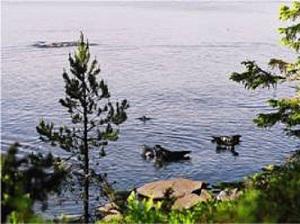Tatjana Shibaeva
Other projects
This project is aimed to support a long-term conservation programme for the Ladoga ringed seal (Phoca hispida ladogensis).
Ladoga ringed seal is a post-glacial relic that inhabits Lake Ladoga, the largest lake in Europe. At present the Ladoga ringed seal is included in the Red Data Books of Russia and Karelia and in the IUCN Red List as a vulnerable species. It is estimated that there were 20,000-30,000 Ladoga seals at the beginning of the 20th century; in 2002 the population is roughly estimated as 1,500-2,000 by Verevkin and as 5,000 by Sipila et al. The exact present state of the population is unknown. The largest herds, containing hundreds of seals, can today be found in the northern parts of the lake, in the Valaam Archipelago. It is felt to be essential that active conservation steps are taken now before the population declines to the point that its remaining genetic diversity is lost.

This large freshwater mammal is the top predator in the food chain in Lake Ladoga. It is thus both an indicator of the health of the lake environment and in itself of immense interest and importance. Safeguarding this species is a best possible guarantee of the conservation of the remarkable biodiversity in this great lake. It is a prime attraction for eco-tourism in the lake region and its loss would have dire consequences in opening the door to further damaging development.

Recently human activities have dramatically increased on Lake Ladoga, which limits the available habitat for the ringed seal. The pressure for the exploitation of the area for tourism and subsistence fishing is greater than ever.
The heart of this project will be to combine the specific measures with a programme to persuade the relevant authorities to impose the necessary restrictions on the basis of the evidence and information provided in the framework of the planned Ladoga Skerries National Park.
In brief, the key benefit of this project will be to help ensure the long-term conservation of a remarkable local endemic species. This will in turn assist significantly in the conservation of other important but less spectacular species as well as the local landscape from indiscriminate and irreversible development. In non-economic terms the protection of this seal will contribute to local pride and reinforce the wider environmental message.